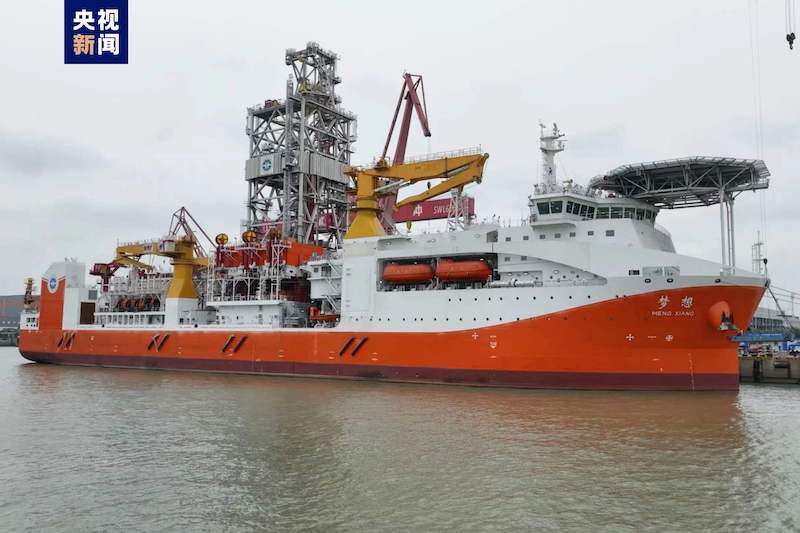China is due to begin sea trials this week for its first ocean research drilling vessel.
The Meng Xiang – ‘Dream’ in Chinese – is able to drill at depths of more than 10,000 metres (32,800 feet), and is expected to beef up the country’s deep-sea oil and gas exploration capabilities.
Aside from being China’s first vessel capable of ultra-deepwater research and drilling, it can travel 15,000 nautical miles (27,780 km) and operate for 120 consecutive days without returning to port, state media reported on Monday. It can also drill as deep as 11,000 metres below sea level.
ALSO SEE: China Banks Pushed to Sell Bad Loans as Consumer Defaults Soar
The vessel can navigate in any sea in any part of the world, according to state media. No details were given on the location of the sea trials.
The Meng Xiang’s activities in the South China Sea and other areas are likely to be closely followed, because of grave concerns about the environmental impacts of deepsea mining and other factors such as what resource the vessel will target, and where it plans to do that.
Vast methane gas fuel in South China Sea
The South China Morning Post has said the Meng Xiang is capable of harvesting energy-rich ‘flammable ice’ from the ocean floor which is “supercharged with methane gas” – gas hydrate in a crystalline form that resembles ice.
China has been ramping up its efforts to mine this substance over the past six years, because “gas hydrate is so densely packed with natural gas that one cubic metre of the solid releases 164 cubic metres of conventional natural gas once extracted,” the Post said in a report today, noting that because this product is mostly methane it can be set on fire and is seen by some “as the future of fuel”.
The critical factor here, as noted by the SCMP, is that methane is a greenhouse gas and that environmental groups have warned that its extraction, if not done carefully, “could leak greenhouse gases and raise the ocean’s acidity level, threatening sea life.”
Meanwhile, a CCTV report also said the ship has large and sophisticated laboratory facilities which can assess marine science, microorganisms and the magnetic fields of rocks.
China’s Ministry of Natural Resources has reportedly estimated that there are 80 billion tonnes of this methane gas hydrate in waters claimed by China. But it should be noted that five Southeast Asian nations also claim large chunks of the South China Sea.
The Meng Xiang sea trials come at a time when tensions are high in the South China Sea and follow comments by Philippine President Ferdinand Marcos Jr, who said over the weekend that his country could start new energy exploration projects in the disputed waterway.
China and the Philippines have traded accusations over repeated ship encounters around a low-level shoal within waters also claimed by Manila.
China claims almost the entire South China Sea, but parts are also claimed by the Philippines, Vietnam, Indonesia, Malaysia and Brunei.
In March, China and the Philippines resumed discussions about jointly exploring oil and gas resources in the South China Sea, which has an average depth of more than 1,200 metres (3,900 feet). But Marcos said on Saturday that “very little progress” had been made.
- Reuters with additional inputs and editing by Jim Pollard
ALSO SEE:
Philippines Fury Over ‘Floating Barrier’ in South China Sea
Philippines Warns Beijing Over South China Sea Boats ‘Swarm’
US Says India Could Join Navy Patrols in South China Sea
Manila, Beijing Vow to Talk Amid South China Sea Tensions
Radios Beam China-Philippines Tension Over South China Sea
























